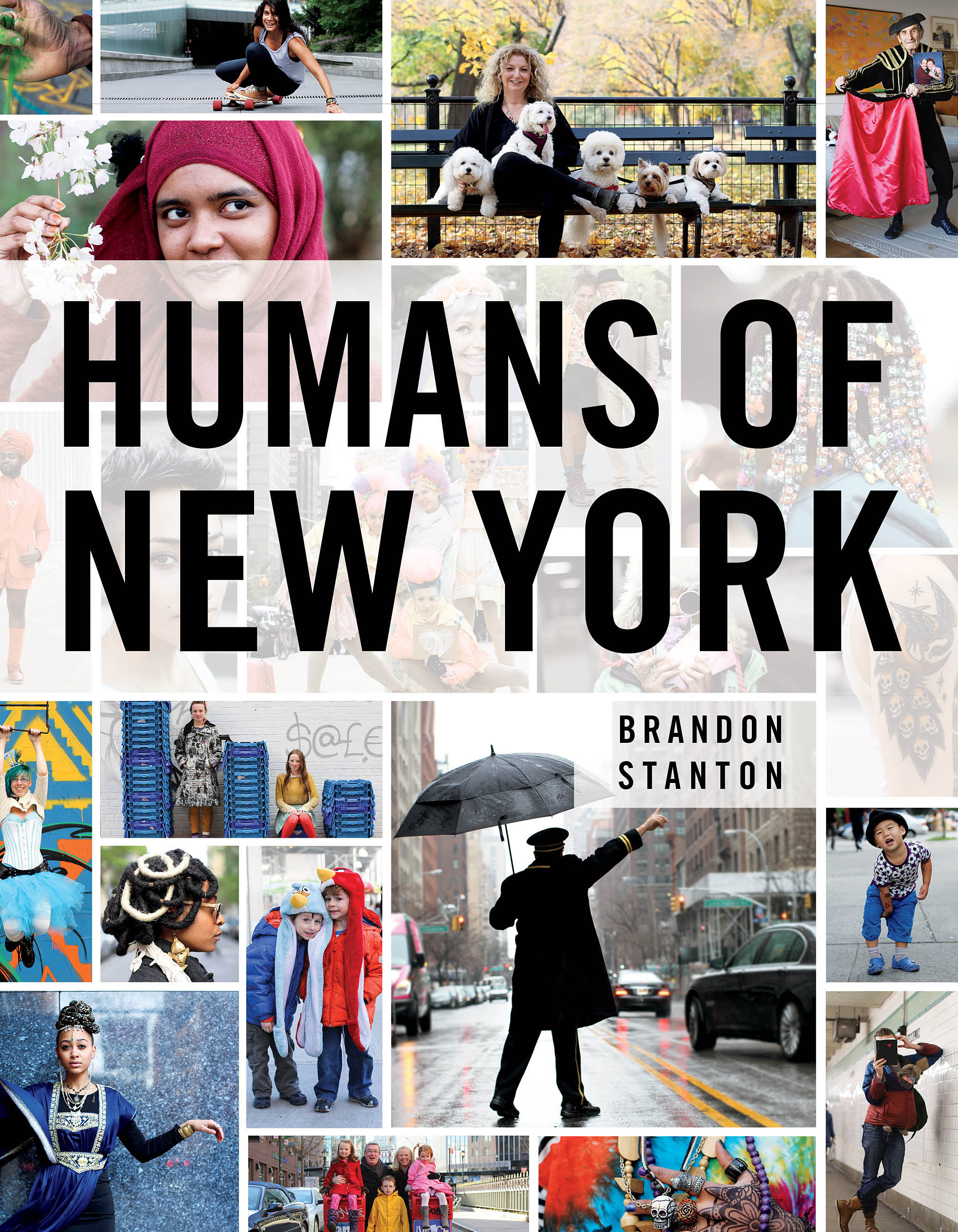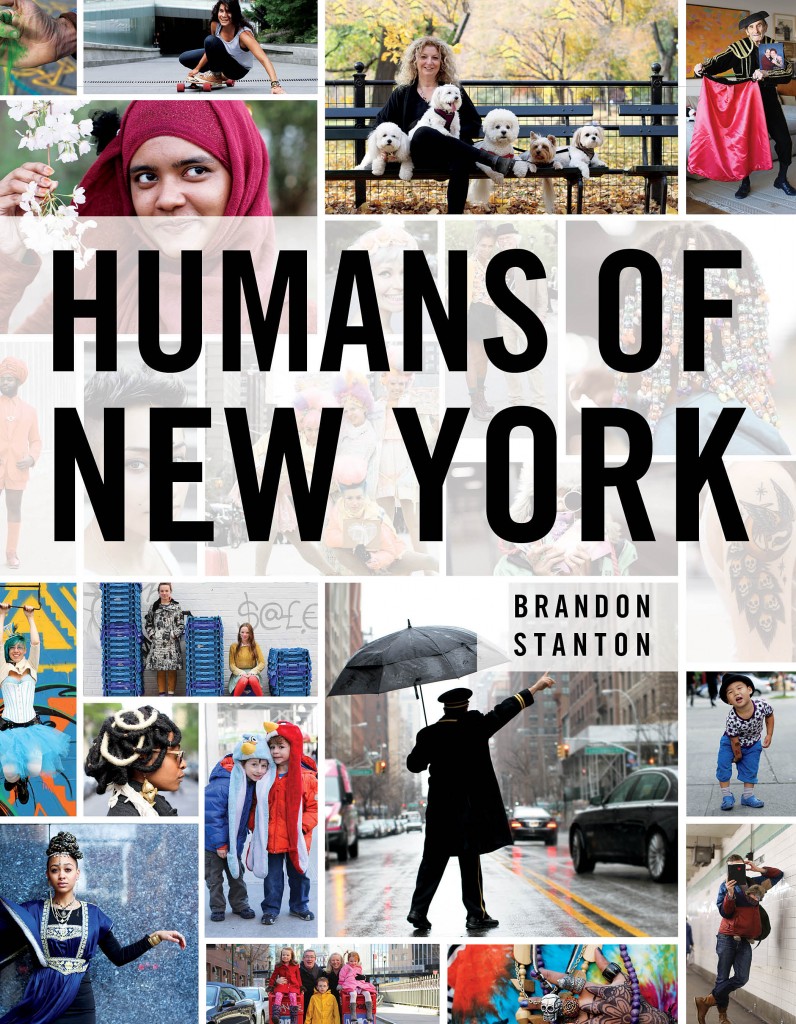By Michael Scoular (The Cascade) – Email
Print Edition: November 6, 2013
There are few cities we surrender our imaginations to more often than New York. Unlike other cultural centres removed from the Pacific Northwest (Los Angeles, Toronto), New York is blessed with a resilience against outright dismissal. You can dislike parts of its identity, some of its artistic output, but the city’s representation (as hope, escape), most often its skyline and square (more idea than image) are embedded as the centre of what is good about North America.
What Humans of New York proposes is that this is not all, that in addition to the city that is equally attractive to creative and business types, the people that live around and in the background of touristy scenery deserve a spotlight too.
From its conception, the photography project of Brandon Stanton is a model of paradise found through arrival in NYC. Where Chicago was his base as a bond trader, and Pennsylvania attracted his eye through its architecture, New York was where Stanton found the pleasure of photographing people.
On his main Tumblr blog, each post can be expected to consist of a shot of people going about business or, more often, posing for a snapshot, with a brief description or a few words they happened to say.
This last part is what sets Stanton’s project apart: what has come out of the frequent profiles since the blog’s explosion in popularity is how not just anyone could do this. Stanton is friendly, approachable, and the questions he asks often bring out the sides of people that are rarely spoken, but always prepared. He doesn’t stick to one part of the city or one type of subject and doesn’t take a day off, yet all his work points in the same direction.
People talk about their jobs, families, desires, fears, and paired with their photographs, it’s a rebuttal to the idea that hell is other people. Rather, Stanton reaches for a depiction of the world where hell would be not hearing about people, and not believing that they all individually know something new and hidden to most.
As a book, Humans of New York is similar to a lot of social-media-to-printed-page examples. There’s some “new work,” but it can’t replicate the way Stanton’s work regularly shows up in a feed or the sheer volume of it, all available through online archive. There’s also the way Stanton shows up in the book. While more recent online posts are weighted toward the type that gives a voice to each person that’s photographed, much of the book is simply captioned by Stanton, or is listed with a location and no other detail.
Where the aim of the project is a de-centering of any one person, making Humans of New York a city symphony of sorts, in the book you can’t forget that there’s one person behind this. Stanton, like many a captioner, makes puns, comments in ways that undermine the openness of some subjects, and when it comes to locations, it’s always “seen in” followed by a borough or neighbourhood. These aren’t merely people existing, but things seen by Stanton, which is true, but has more to do with the inward gaze of social media. Humans of New York is usually regarded as exceptional precisely because it’s an outlier.
Most are without any additional message, but this, mixed with the positivity in most of the photos, also has a way of approving everything in them. What it shows is a city of almost no dissent, of harmony with the way things are, of making it through every situation through life affirmation, of which the book is a compedium. People are more complex than a single photo and a few seconds of their lives.
There is also a greater percentage of fashion-type photography than shows up in the blog’s regular cycle. As it encroaches on, but never exceeds already-existing work like Bill Cunningham’s On the Street, Stanton can seem to be working with a narrower view than the premise of his egalitarian project would suggest. It’s worth noting how many times Stanton refrains from comment, but this makes the times he does stand out, and makes the selectivity of his book more noticeable than he’s likely meant it to be. There’s publishing money to be made with popular blogs, but what few of these condensed forms acknowledge is the fundamental incompatibility of the two mediums.
While it may fall short, that Humans of New York can be compared with the dancing optimism of Girl Walk // All Day or the eavesdropping angels of Wings of Desire is a tribute to the commitment and artistry Stanton has brought together. And while this book will remain static, on Tumblr there’s always the possibility the project could improve in yet-unknown ways.
One remaining fault is that Stanton’s focus on New York alone could simply feed back into the city’s superior status, that it is the one all must aspire or flee to, or face inadequacy. But the best of Stanton’s work is usually agreed to be how it connects people, not compares them.
And for all their individuality, many of the words spoken on the spot can sound familiar. Ideas of how to make it, what people see their best selves doing, memories of times passed, come, perhaps more rarely and unedited, from friends, teachers, and unexpectedly (or unasked for) in public transit. While they’re spilled out into a valley rather than a grid of enormous possibility, our own communities are made up of, as Stanton’s title tries to include, “humans” with unheard voices.
His New York photography is a forced reminder that everyone wants to be spoken to as an equal, thought to be interesting, if only for a few minutes of a day.



